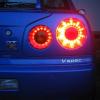Cyl No. 6 Lean Out - Theory Vs Practical
Announcements
-
Similar Content
-
Latest Posts
-
My first thought after reading first post was, did you set the ignition timing properly, especially after removing the CAS.
-
Computer successfully fitted. Doing as it should. Just need to dyno.
-
4 GTRs, so what, maybe a house deposit in the Western Suburbs? 😮 😛 The white on the right is an R33 yeah? I'll help you roll it away forever too... PM me your address
-
Rusty gold sadly only two Gtr’s and two rwd boats (lower middle class bogan)
-








Recommended Posts
Create an account or sign in to comment
You need to be a member in order to leave a comment
Create an account
Sign up for a new account in our community. It's easy!
Register a new accountSign in
Already have an account? Sign in here.
Sign In Now